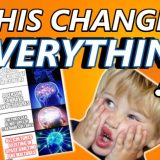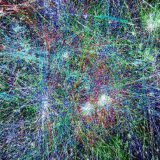Going in Circles?
So far, I have read the following books in class:
- Asian American History: A Very Short Introduction, by Madeline Hsu
- When the Emperor Was Divine, by Julie Otsuka
- Donald Duk, by Frank Chin
- Forgotten Country, by Catherine Chung
- Dark Blue Suit, by Peter Bacho
In this post, I would like to explore a common connection I’ve seen in several books.
Rituals of Ethnicity
Transnational forms of identity first sparked my interest when I read Rituals of Ethnicity by Sara Shneiderman. Her work holds the title as the first ethnography about the Thangmi (Thami) people, an ethnic minority group that practices circular migration between Nepal and India. The book examines the relationship between migration, identity, and politics. While it is quite advanced for the undergraduates on a theoretical level, it does provide an in-depth look at identity theory and ethnicity. No doubt, I am excited to revisit this book for my research. I have undeniably improved my ability to comprehend such pieces of work over the last year, and both my recent life experiences and books I’ve read after Rituals of Ethnicity definitely contribute to my understanding of Shneiderman’s work and ethnicity at large.
Fresh Fruit, Broken Bodies
Which brings me to the next book I’ve increasingly been returning to over the quarter: Fresh Fruit, Broken Bodies by Seth Holmes. Through creative writing, Seth Holmes weaves stories of both thrilling participant observation and multi-faceted interviews to address the issues at large regarding policy, migration, and embeddedness. He does this through an analysis of the migratory practices of the Triqui people from Oaxaca, Mexico. Taking up critique about professional health care systems in the United States and Mexico, Holmes explores the ways in which the embeddedness of invisible power structures play a role in healthcare for migrants.
Asian American History: A Very Short Introduction
Both migration and return-migration are large themes between all of these books. In Asian American History, by Madeline Hsu, I learned about some of the different policies affecting migration for those considered Asian American over the last couple centuries. For many immigrants, moving to the United States was not only a single settlement in one place, but rather it was one in many instances of migration both within the United States and nationally.
When the Emperor Was Divine
Julie Otsuka‘s book, When the Emperor Was Divine, tells the tell of a Japanese-American Family in America during World War 2, and their experiences in a Japanese Internment Camp. Through creative narrative, she juxtaposes the justifications for internment and the traumatic effects of being forced to leave your home, and coming back to prejudice, discrimination, and the media’s constant framing of all Japanese as “the enemy.” In When the Emperor Was Divine, the reader travels with a family as they are forced to migrate from the Californian coast to a desert in Utah, and their subsequent return several years later.
Donald Duk
Donald Duk, by well-known Asian American literature author Frank Chin, explores the coming of age of a Chinese American boy living in Chinatown several decades ago. This novel brings together migration in a different sense: jumping between reality and the dream world. Donald Duk, the main character in the novel, explores his own identity in the liminality of a transnational sense of identity. Chin contrasts growing up in American culture with the shared, collective, and sometimes forgotten memories of the Chinese in America. Ultimately, this novel demonstrates how immigrants to America can be and often are in two places at once, in both culture and physical location.
Forgotten Country
The following week, we arrived at Catherine Chung‘s novel entitled, Forgotten Country. This is a story about a Korean family leaving their home country due to Japanese colonialism during 1910-1945, and their subsequent return to Korea decades later. For Koreans that left during this time, many did not expect to return. But Chung paints a picture of the traumatic loss of one’s home country and with it, one’s sense of identity. Forgotten Story is a tale about leaving and coming back, discovering what was lost and that something was even lost in the first place, and collective trauma that gets passed down from generation to generation.
Dark Blue Suit
Finally, Peter Bacho‘s novel written in Short-Story Cycle format called Dark Blue Suit follows the lived experiences of Filipino/Filipina Americans. While there are many hidden, underlying themes in this book, I would like to focus on a singular issue brought up in the book. That, of leaving and coming back. Buddy, the novel’s main character in which you view the world, shows us through different stories throughout his lifetime how he came to discover his identity.
One of the main anchors of the novel is the story about Buddy’s relationship with his uncle. The uncle (whose name escapes me) moved from the Philippines to America decades ago, but decides on moving back after determining he has no chance at the American Dream after all those years. Bacho’s use of literary technique shines a spotlight on the promises of the American Dream pitched to under-privileged communities and how some people cannot attain it, especially in the case of immigrants. Accepting that the dream was a failure, some return to the land they once left in search of a way to fill that unfulfilled promise.
So what can I make of all these stories, both fictional and non-fictional, that relate to return-migration? I’m not sure, to tell you the truth. But I can guarantee these connections will come into play more and more as I read the remaining novels in this class and work on my final project.















tubidy mobi
Su kaçak tespiti, musluk tamir ve klozet tamiri hizmetleri.
Detaylar: Tesisatçı